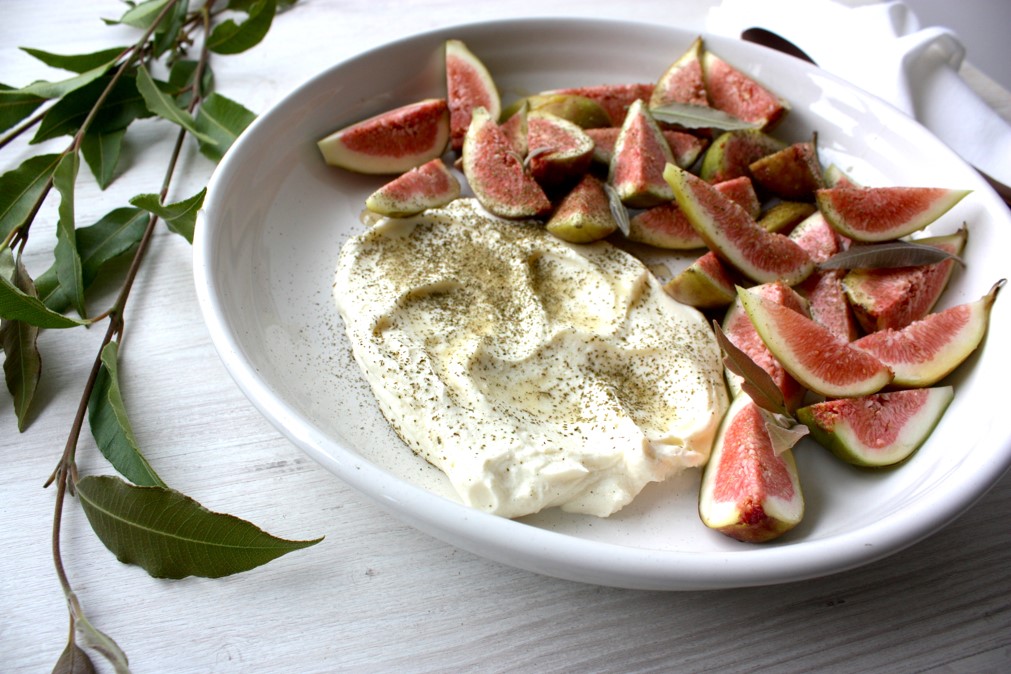Figs with ricotta and lemon myrtle
Lemon Myrtle would arguably be one of Australia’s most recognisable and widely used native ingredients. Over the years, it has found its way into the culinary world and has graced dishes from some of Australia’s best chefs like Dan Hunter’s world famous Brae and Monty Koludrovic Icebergs. The unmistakable scent of sweet citrus fills the room and imparts a delicate and unforgettable flavour to the dish which, keeps cooks and chefs reaching for it time again. This native shrub is becoming an essential ingredient in the mainstream culinary world and an integral part of modern Australian cooking. Matt Stone, executive chef of Oakridge Winery in the Yarra Valley attributes this to its ability to be used in a wide number of sweet and savoury dishes ranging from Icebergs famous roast chicken to Matt’s deliciously infused sorbets, the uses are endless.
Lemon Myrtle has a vibrant history in Australia and long before it was discovered and named by European settlers in 1853 it was being used by Australian Aborigines. The leaves and branches would be used in ground ovens to impart its lovely citrus flavour into their baked food and more interestingly the leaves of this plant were used as wound dressing as it was noticed to speed up the healing process. Recent studies have attributed this to the high levels of the compound Citral that naturally occurs in Lemon Myrtle. As the name would suggest Citral is found in many other ingredients around the world which have that unmistakable flavour of citrus (lemongrass and lemons) however, our humble Lemon Myrtle has the highest naturally occurring levels of Citral in the world which has led to the use in the pharmaceutical industry along with the food industry.
If you are new to Lemon Myrtle think of it as a spice and incorporate it in similar ways into your food. I think figs with whipped ricotta is a lovely dish to make at home with minimal effort and can be either an entrée to a meal ahead or a cheese course at the end. Lemon Myrtle infused into the honey adds those lovely citrus notes and helps cut through the sweetness and ties this dish together.

Ingredients
- 6-8 ripe figs
- 1 cup fresh ricotta
- 1 tbsp extra virgin olive oil
- Small pinch of salt
- 3 tbsp. honey
- 1 tsp lemon myrtle
Directions
Place the ricotta, extra virgin olive oil and salt into a small mixing bowl and using a whisk whip the ricotta until everything is fully combined and you have a smooth consistency. You may have to add a dash of water to loosen the mix depending on what your ricotta is like, the mix should have the consistency of thick yoghurt. Check and adjust the seasoning if needed and set aside. This process can also be done in a food processor or using a stick blender.
On a clean board and using a sharp knife cut the tops of the stems from the figs and discard then slice the figs lengthways into 4 or six segments each, depending on size.
Get a suitable platter or bowl from the cupboard and make a mound of the whipped ricotta to one side of your serving dish, scatter the fig segments around the rest of the dish. Do not be pedantic about the placement of the fig segments, you want the plate to look rustic.
Meanwhile bring the honey to the boil in a small saucepan over high heat with the lemon myrtle. Cook the honey for 3-4 minutes until you can smell the honey start to caramelise, allow to cool slightly and pour over the fig segments and whipped ricotta. You can drizzle extra virgin olive oil over the top of the dish before serving as an optional extra.
Serve immediately.